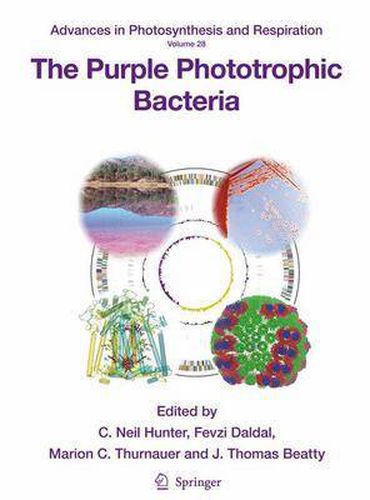Readings Newsletter
Become a Readings Member to make your shopping experience even easier.
Sign in or sign up for free!
You’re not far away from qualifying for FREE standard shipping within Australia
You’ve qualified for FREE standard shipping within Australia
The cart is loading…






This book follows the tradition initiated in 1963, molecule approaches. New theoretical frameworks then subsequently extended in 1978 and 1995, of have had to keep pace with such technical devel- summarizing our knowledge of the photototrophic ments. Through the use of atomic force microscopy bacteria in a single volume. The ? rst book was Bac- it has been possible to examine the organization of terial Photosynthesis (Howard Gest, Anthony San clusters of individual light-harvesting and reaction Pietro and Leo P. Vernon, eds), 1963, Antioch Press, center complexes in their native membranes. We are Y ellow Springs, Ohio. Fifteen years later, Roderick K. now beginning to see how the properties of native and Clayton and William R. Sistrom edited The Photosyn- modi? ed photosynthetic complexes can be harnessed thetic Bacteria (1978, Plenum Press, New York), an on the nanoscale for the design of biologically– indispensable book for any scientist in the ? eld at that spired energy and electron transfer devices. In ad- time. In 1995, Robert Blankenship, Michael Madigan tion to these advances, we are reminded that many and Carl Bauer edited the most complete survey of new phototrophic bacteria are still being discovered, the subject, Anoxygenic Photosynthetic Bacteria. By and although it has been 45 years since the ? rst book that time, the book had been taken under the wing on these bacteria appeared, there is much that we do of the Advances in Photosynthesis Series, initiated not know or understand.
$9.00 standard shipping within Australia
FREE standard shipping within Australia for orders over $100.00
Express & International shipping calculated at checkout
This book follows the tradition initiated in 1963, molecule approaches. New theoretical frameworks then subsequently extended in 1978 and 1995, of have had to keep pace with such technical devel- summarizing our knowledge of the photototrophic ments. Through the use of atomic force microscopy bacteria in a single volume. The ? rst book was Bac- it has been possible to examine the organization of terial Photosynthesis (Howard Gest, Anthony San clusters of individual light-harvesting and reaction Pietro and Leo P. Vernon, eds), 1963, Antioch Press, center complexes in their native membranes. We are Y ellow Springs, Ohio. Fifteen years later, Roderick K. now beginning to see how the properties of native and Clayton and William R. Sistrom edited The Photosyn- modi? ed photosynthetic complexes can be harnessed thetic Bacteria (1978, Plenum Press, New York), an on the nanoscale for the design of biologically– indispensable book for any scientist in the ? eld at that spired energy and electron transfer devices. In ad- time. In 1995, Robert Blankenship, Michael Madigan tion to these advances, we are reminded that many and Carl Bauer edited the most complete survey of new phototrophic bacteria are still being discovered, the subject, Anoxygenic Photosynthetic Bacteria. By and although it has been 45 years since the ? rst book that time, the book had been taken under the wing on these bacteria appeared, there is much that we do of the Advances in Photosynthesis Series, initiated not know or understand.